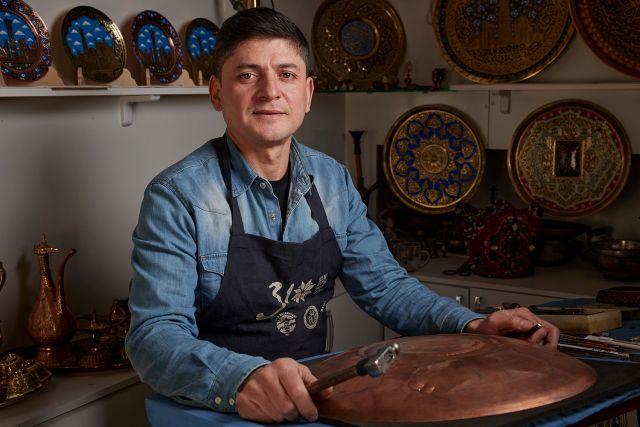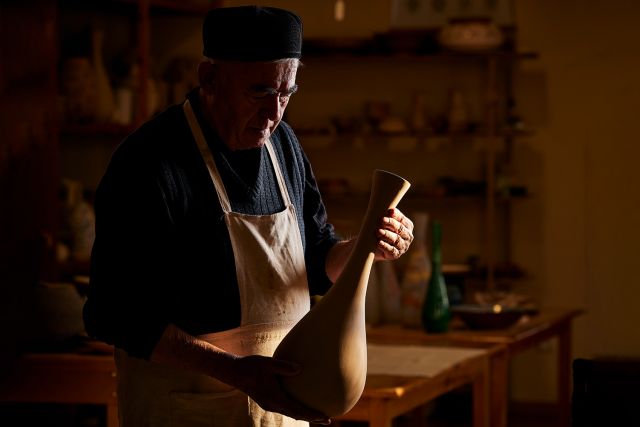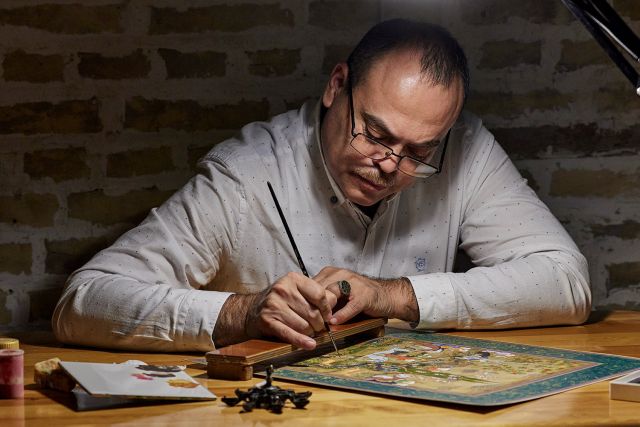This lyagan is made on a mechanical modelling machine from red clay and coated with white engobe by the pouring method. After the initial firing, it is dusted with a damp sponge and covered with a decor sketch in pencil. The style of the decor is inspired by Bukhara traditional ceramics of the 18th and 19th centuries. The decor is then applied with manganese and copper oxides with the Bosma and Kalami methods with the Pahtali-Bosma tool.
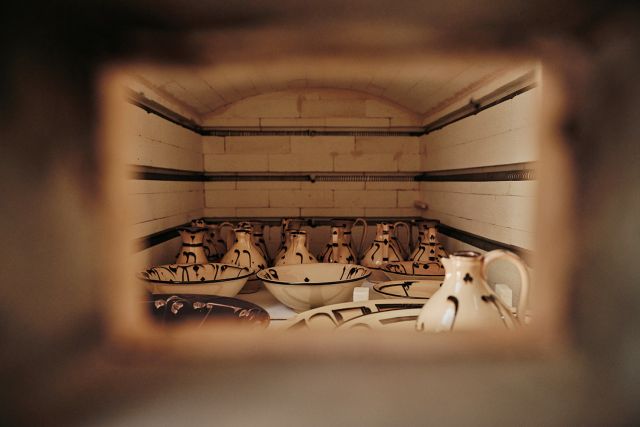
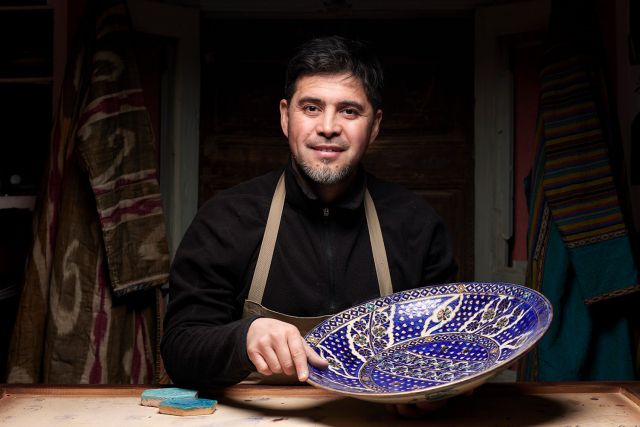
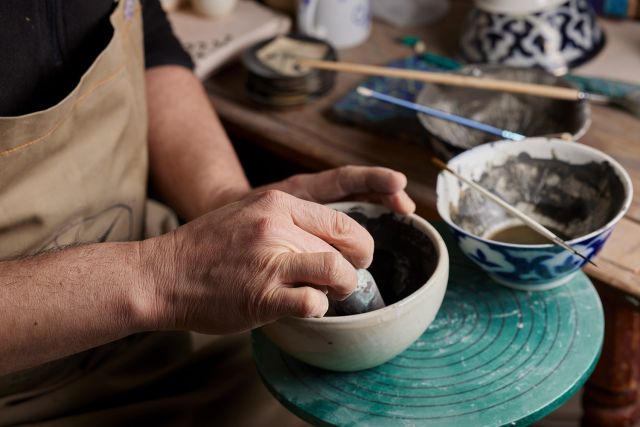
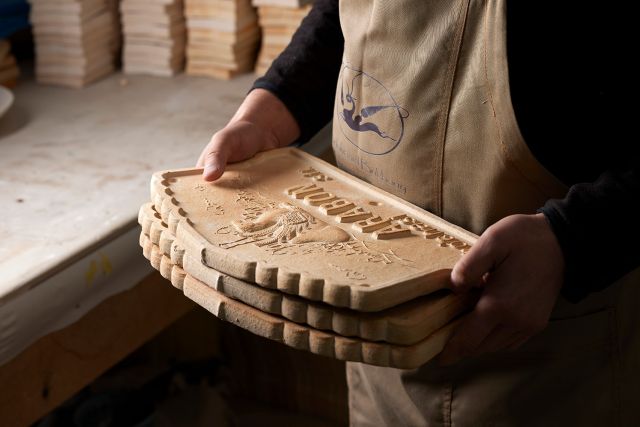
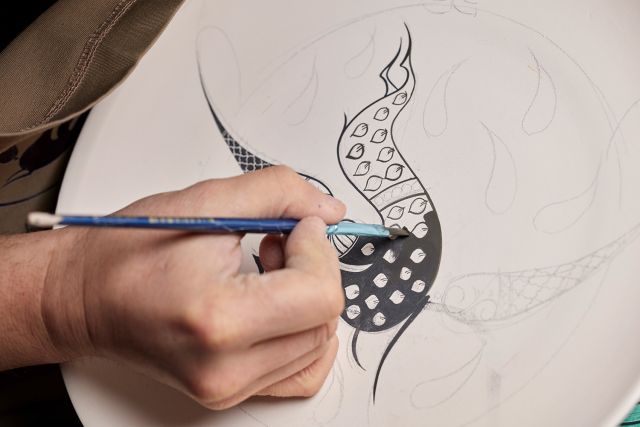
Abdulvakhid Bukhoriy Karimov
- Ceramicist
- Bukhara, Uzbekistan
- Master Artisan
- Recommended by The Art and Culture Development Foundation
By appointment only
+998 909348371
Restoring the glory of tradition
- • Abdulvahid combines ancient techniques with contemporary approaches
- • He helped to restore an ancient complex of Ichan Qala
- • He revitalises a forgotten tradition of Bukhara blue ceramics
Abdulvahid Bukhoriy Karimov started working with clay in his childhood, learning to make toys in a village in the Bukhara region. He later moved to Tashkent and studied at the Art College and the National Institute of Fine Arts and Design. He always loved ancient ceramics and spent a lot of time in museums. Today he is particularly interested in working with national heritage, using local clays, reviving traditional patterns and techniques. Abdulvahid regularly participates in restoration projects and contributes to the reconstruction of historic sites. He creates unique pieces, but always cites history and national traditions as sources of inspiration. He is looking for balance between innovation and universal values, combining beauty and moderation.
Read the full interviewWorks
Photo: ©All rights reserved

Photo: ©All rights reserved
In 2007, Abdulvahid Bukhoriy Karimov and his wife in Bukhara found the fragment of a large conical tagora vessel, used for making dough. This fragment is dated from the middle to the end of the 18th century. After years of trial and error, when the recipe for glaze was finally found, this work was made in 2015. It was fired several times. In 2020, at the initiative of the master himself, all elements were edged in gold. The decor is applied with oxides of manganese, copper and cobalt with the Kalami method or the Siyoh-Kalam Muikalam brush.

Photo: ©All rights reserved
This lyagan is turned on a mechanical modelling machine from red clay and coated with white engobe by the pouring method. After the initial firing, dust was applied with a damp sponge, and then the design was sketched in pencil. The style of decoration is inspired by Bukhara traditional ceramics of the 18th and 19th centuries. Diamond-shaped decor represents the sun, the turquoise rim with a brown frame is life-giving water.

Photo: ©All rights reserved
This is one of the creative works inspired by the ceramics of the 9th and 11th centuries. On the edges in dark green (copper oxide) there is the inscription 'Love'. The lyagan is covered with a turquoise glaze and after the second firing at 980°C it was decorated with gold. In the middle of the lyagan, in Arabic handwriting, is a saying by Rumi.

Photo: ©All rights reserved
The Eastern ceramics of the 9th to 12th centuries are important. This piece, Consideration, strict and luxuriously flowered with split letters and inscriptions in Kufi handwriting, captured his imagination. He scrupulously studied the technique of calligraphy on ceramics based on fragments of the mentioned period. The result was a series on Epigraphic decoration in the style of the Samanid period. He managed to understand the principle, technique and what tools and brushes were used by the Samanid masters.





